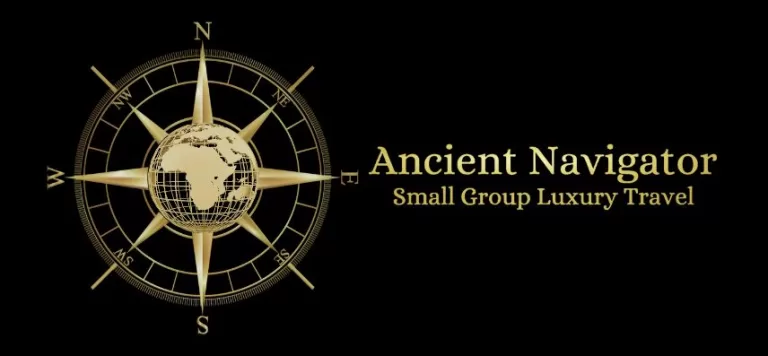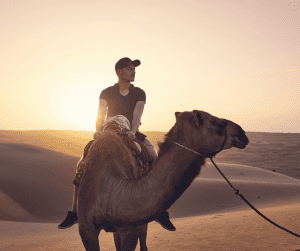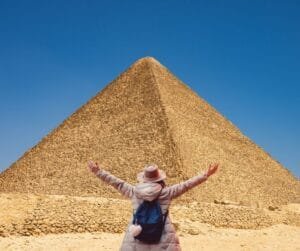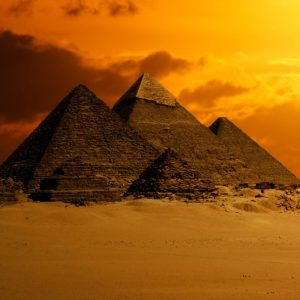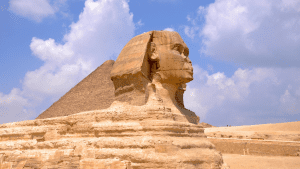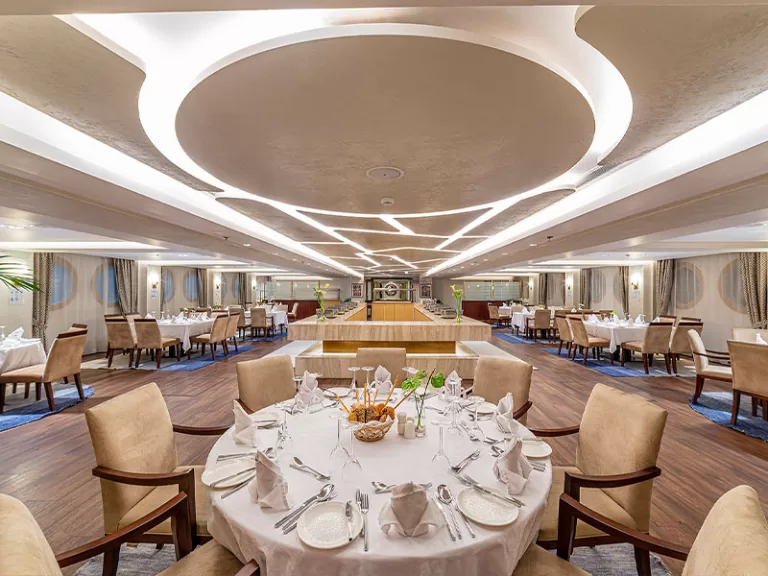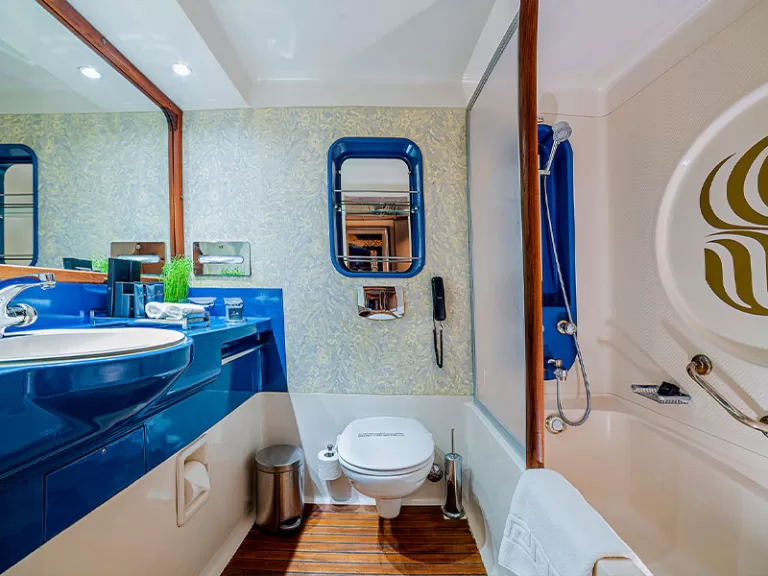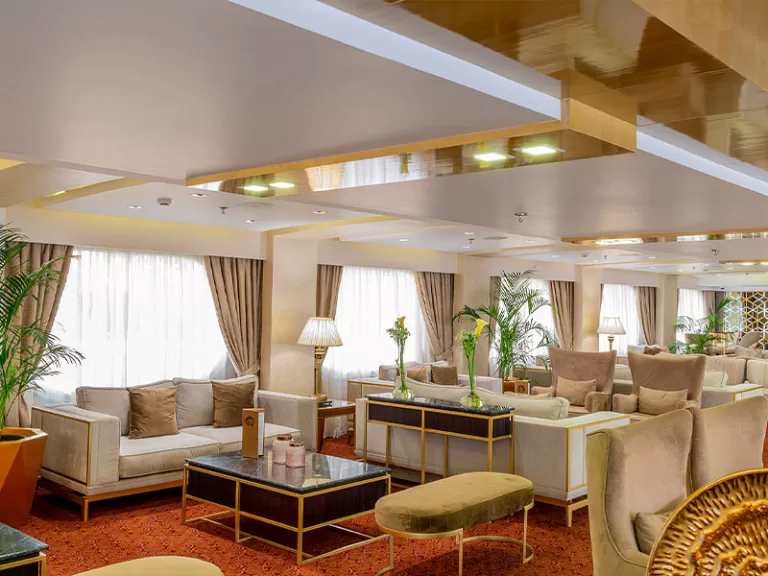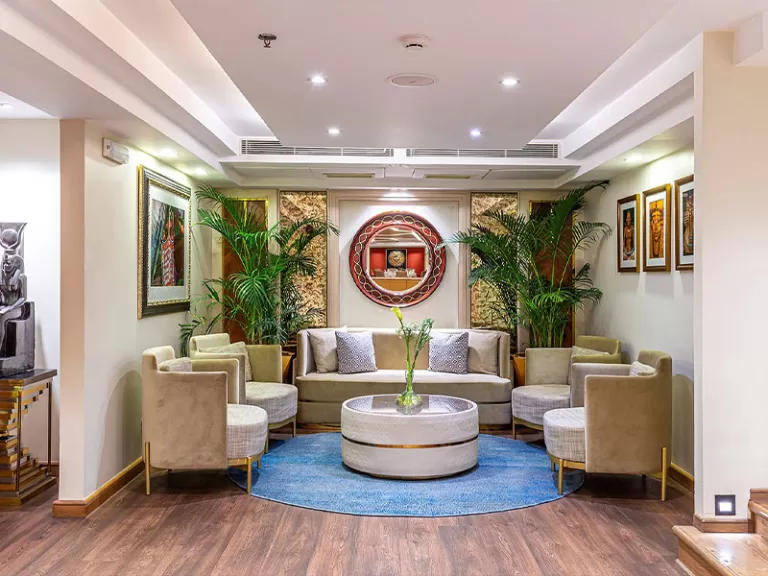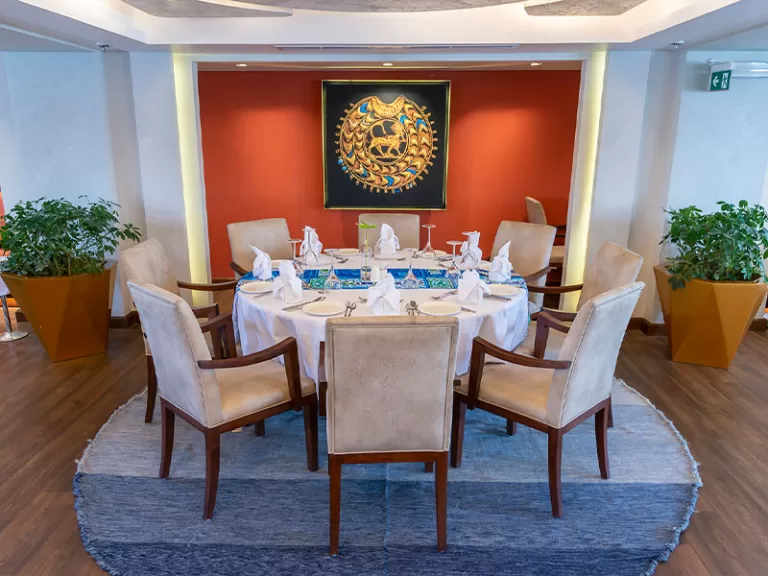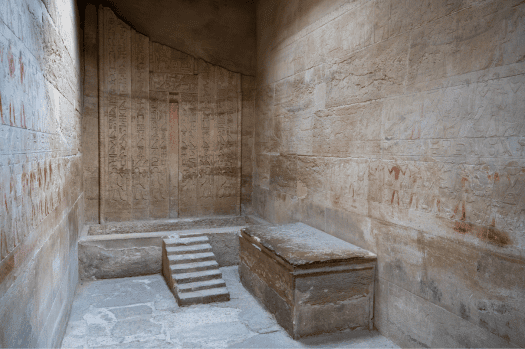
Home » Weekly Blog » The Art of Mummification: Secrets of the Afterlife
The Art of Mummification: Secrets of the Afterlife
Table of Contents
In the heart of ancient Egypt, where the golden sands of the desert met the life-giving waters of the Nile, a civilization obsessed with eternity flourished. Their towering pyramids and intricate tombs still capture our imaginations today, but behind the stone and script, lies one of humanity’s most intriguing practices—the art of mummification.
Mummification was more than a method of preserving the body; it was a ritual steeped in deep spiritual meaning, a meticulous process designed to secure one’s place in the afterlife. But how did the ancient Egyptians perfect this sacred art? Why did they believe that preserving the body was the key to eternal life? And what lessons can we take from these ancient traditions today?
Let’s unravel the secrets of mummification, one linen-wrapped layer at a time.
The Spiritual Beliefs Behind Mummification
Life, Death, and Eternity
For the ancient Egyptians, life on Earth was just a temporary stop on a much grander journey. The real adventure began after death—a journey that, if navigated properly, led to an eternal life among the gods. To them, death wasn’t an end; it was a transformation, a doorway to a new existence in the afterlife.
At the heart of their belief system was the concept of duality—life and death, body and spirit, chaos and order. Every individual was made up of several essential components, the most important being the Ka, Ba, and Akh. These were not just abstract spiritual elements; they were vital parts of one’s soul.
- The Ka: The vital essence or life force that remained in the body after death, needing nourishment to survive.
- The Ba: A person’s spirit, represented as a bird with a human head, which could travel between the physical and spiritual worlds.
- The Akh: The fully realized spirit, transformed after death and capable of joining the gods.
Each of these elements was essential for eternal life. However, they all depended on the preservation of the body. Without it, the soul’s journey was doomed to fail.
Osiris: The First Mummy and the God of the Afterlife
The Egyptians found comfort and inspiration in the myth of Osiris, the god of the afterlife. According to legend, Osiris, once a great king, was murdered and dismembered by his jealous brother, Set. His loving wife, Isis, gathered his scattered body parts and, through powerful magic, brought him back to life. This resurrection made Osiris the first mummy, and he became the god who judged souls in the afterlife.
Osiris’ story was not just about death; it was about resurrection and rebirth. His myth provided a model for every Egyptian—if Osiris could be reborn, so could they, provided their bodies were preserved and their souls properly guided.
Thus, mummification was born, a sacred art designed to mimic the god’s resurrection and secure a similar fate for mortal souls.
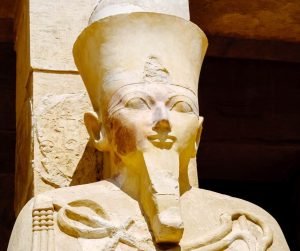
The Mummification Process: Step-by-Step
Creating a mummy wasn’t a simple task. It was an elaborate, ritualistic process that took around 70 days to complete. Every step was imbued with meaning, each incision, jar, and linen wrap a crucial part of preparing the body for eternity.
1. Purification and Washing
The process began with a simple yet profound step: cleansing the body. Priests, trained in the art of mummification, would wash the body with water from the sacred Nile River, symbolizing a return to the source of life. The Egyptians believed that the Nile was the very lifeblood of their civilization, so it was only fitting that the dead should be purified by its waters before their journey into the afterlife began.
After washing, the body was rinsed with palm wine, another symbol of purification. This step wasn’t merely hygienic; it was spiritual. By cleansing the body, the priests were not just washing away dirt—they were washing away the impurities of life, making the deceased pure and ready for their resurrection.
2. Removal of Internal Organs
Once cleansed, the real work began. The body’s internal organs, which were considered vulnerable to decay, had to be removed and preserved separately.
- The embalmers first removed the brain, pulling it out through the nostrils using a hooked tool. While we may consider the brain important, the Egyptians saw it as unnecessary in the afterlife.
- The next step was the removal of the internal organs: the stomach, liver, lungs, and intestines. These organs were seen as essential to the body’s future function, but too prone to decomposition to remain in the corpse.
- Each organ was embalmed and placed in a special container known as a canopic jar. Each jar was protected by one of the Four Sons of Horus, deities who guarded the organs:
- Hapi: with a baboon’s head, guarded the lungs.
- Duamutef: with a jackal’s head, guarded the stomach.
- Imsety: with a human head, protected the liver.
- Qebehsenuef: with a falcon’s head, preserved the intestines.
These jars were placed in the tomb alongside the mummy, ensuring the deceased had all the parts of their body intact for the afterlife.
Interestingly, the heart was left inside the body. The Egyptians believed the heart was the seat of emotion, intelligence, and memory. It was the key to the person’s identity and would be weighed in the afterlife by Osiris against the feather of Ma’at, the goddess of truth and justice. A heavy heart, burdened with sin, would be devoured by the fearsome Ammit, part lion, part hippo, part crocodile, ending the soul’s journey. A light heart, however, would pass the test and continue on to eternal bliss.
3. Dehydration and Drying
With the organs removed, the body had to be dried to prevent decay. The embalmers covered the body with natron, a natural salt found along the Nile. This drying process took about 40 days, during which the body would lose all its moisture, shrinking but remaining intact. The natron preserved the body so well that many mummies, thousands of years later, still retain their skin, hair, and even tattoos.
This step was crucial. Preservation of the physical form was not just a practical concern—it was deeply spiritual. The Egyptians believed that without an intact body, the soul would have no place to reside in the afterlife. The body needed to be recognizable for the Ka and Ba to return to it.
4. Wrapping and Amulets
After the drying process, the body was wrapped in layers upon layers of linen bandages. This wasn’t done hastily; it was an intricate, almost artistic process. The embalmers often spent two weeks or more wrapping the mummy, with hundreds of yards of linen used to ensure every part of the body was protected.
As the body was wrapped, amulets were placed between the layers of linen. These were not mere ornaments; each amulet held spiritual power and was meant to protect the deceased on their perilous journey through the afterlife. Some of the most important amulets included:
- The Eye of Horus: Symbolizing healing and protection.
- The Scarab Beetle: Representing rebirth and resurrection.
- The Ankh: The key to eternal life.
In addition to amulets, priests recited prayers and spells from the Book of the Dead, a collection of magical texts designed to guide the soul through the afterlife and protect it from harm.
One of the most important ceremonies during this stage was the Opening of the Mouth ritual. Priests would touch the mummy’s mouth with a sacred tool, symbolically restoring the senses so that the deceased could speak, eat, and breathe in the afterlife.
5. The Final Rites and Burial
Once the body was fully prepared, it was placed in a beautifully decorated coffin or series of nested coffins. The most elaborate of these, reserved for royalty and the elite, were richly adorned with gold, jewels, and paintings depicting scenes from the deceased’s life and their hoped-for journey into the afterlife.
The body was then laid to rest in a tomb, often accompanied by personal possessions, food, and treasures that the deceased would need in the afterlife. Tombs were meticulously designed to reflect the cosmos, aligning the deceased with the stars and the divine.
In some cases, the tomb itself was a masterpiece. The tombs of pharaohs, like those in the Valley of the Kings, were richly decorated with scenes from the Book of the Dead, maps of the underworld, and images of gods and goddesses who would protect the soul.
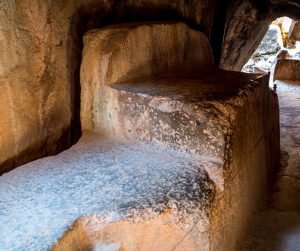
Mummification as a Reflection of Egyptian Society and Beliefs
A Privilege for the Elite
Mummification wasn’t accessible to everyone. It was an expensive, time-consuming process, reserved for the wealthy, royalty, and priests. Pharaohs, the most powerful individuals in Egyptian society, were given the most elaborate mummifications, buried in immense tombs with vast riches to ensure their safe passage and comfort in the afterlife.
For the lower classes, simpler burial practices were employed, though efforts were still made to preserve the body in some form. Even those who couldn’t afford full mummification hoped that, through prayers and offerings, they could secure a place in the afterlife.
The Body as a Vessel of Immortality
At its core, mummification reflected the Egyptians’ belief in the body’s sacred role as the vessel for the soul’s journey. They believed that without a physical body, the soul had no anchor and would be lost forever.
This belief was also a statement of defiance against death. Through mummification, the Egyptians declared that death could be overcome, that the soul could live on, as long as the body remained intact. It was a way of preserving the essence of life itself, a victory over the natural decay that claimed all living things.
Aligning the Deceased with the Cosmos
Egyptian tombs and mummies weren’t just buried in the ground; they were carefully placed in alignment with celestial bodies, such as the stars and the sun. The Egyptians believed that the pharaohs, in particular, were destined to become stars after death, joining the gods in the heavens.
This cosmic alignment reflected their belief in the universe’s order and balance, a concept known as Ma’at. The dead, like the living, needed to be in harmony with this order to ensure their safe passage and eventual resurrection.
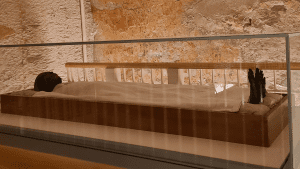
The Legacy of Mummification in Modern Times
Archaeological Discoveries: Unlocking Ancient Secrets
For centuries, the secrets of mummification lay buried in the sands of Egypt, hidden in tombs and pyramids, waiting to be uncovered. But in the last two centuries, archaeologists have made incredible discoveries that have brought us closer to understanding this ancient art.
Perhaps the most famous discovery of all came in 1922, when British archaeologist Howard Carter unearthed the tomb of King Tutankhamun. The discovery of Tut’s nearly intact tomb was a treasure trove of information about mummification and burial practices in ancient Egypt. The boy king’s golden coffin, his exquisite funerary mask, and the wealth of items buried with him have given us an unparalleled glimpse into the royal burial traditions of ancient Egypt.
But King Tut is just one of many mummies that have been found. Ramses II, one of Egypt’s greatest pharaohs, has been studied extensively, revealing insights into how mummification techniques evolved over centuries. Modern technologies, such as CT scans and DNA analysis, have allowed scientists to look inside mummies without unwrapping them, offering new clues about the health, diets, and diseases of the ancient Egyptians.
Mummies in Popular Culture: Myths and Misconceptions
Mummies have become a cultural icon in their own right, thanks in no small part to Hollywood. Movies like The Mummy (1932 and 1999) have cemented the image of the wrapped, walking dead in the public imagination. While these portrayals are thrilling and entertaining, they often oversimplify or misrepresent the spiritual significance of mummification.
Far from being objects of horror, mummies were seen as sacred by the ancient Egyptians. They were physical vessels of immortality, carefully preserved to protect the soul’s journey into the afterlife. By understanding the true meaning of mummification, we can appreciate the reverence with which the Egyptians approached death and the afterlife.
The Science of Preservation: What We’ve Learned
Modern science has also been fascinated with how the ancient Egyptians perfected the art of preservation. Scientists have studied the chemical composition of natron, the wrapping techniques, and the various oils and resins used in mummification. This research has helped us understand not only how the Egyptians preserved bodies so well but also their advanced knowledge of chemistry and biology.
Some researchers have even experimented with modern-day mummification techniques, using similar methods to those of the ancient embalmers. These studies have confirmed that, under the right conditions, bodies can indeed be preserved for millennia.
Conclusion
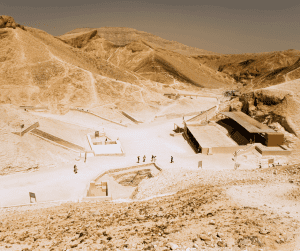
The art of mummification was more than just a way to preserve the dead—it was a deeply spiritual practice, designed to ensure the soul’s safe passage into the afterlife. Every step, from the washing of the body to the wrapping of the linen, was part of a sacred ritual that reflected the Egyptians’ complex beliefs about life, death, and rebirth.
Though we no longer practice mummification today, the fascination with this ancient ritual endures. Whether through archaeological discoveries, museum exhibits, or popular culture, mummies continue to captivate our imaginations, offering a glimpse into a world where death was not the end, but the beginning of a new and eternal journey.
If you’re inspired to learn more about the wonders of ancient Egypt, why not visit a museum or plan a trip to the land of the pharaohs? There’s nothing quite like standing before a sarcophagus, gazing into the face of a king who lived thousands of years ago, and feeling the connection to a civilization that sought immortality in the stars.

